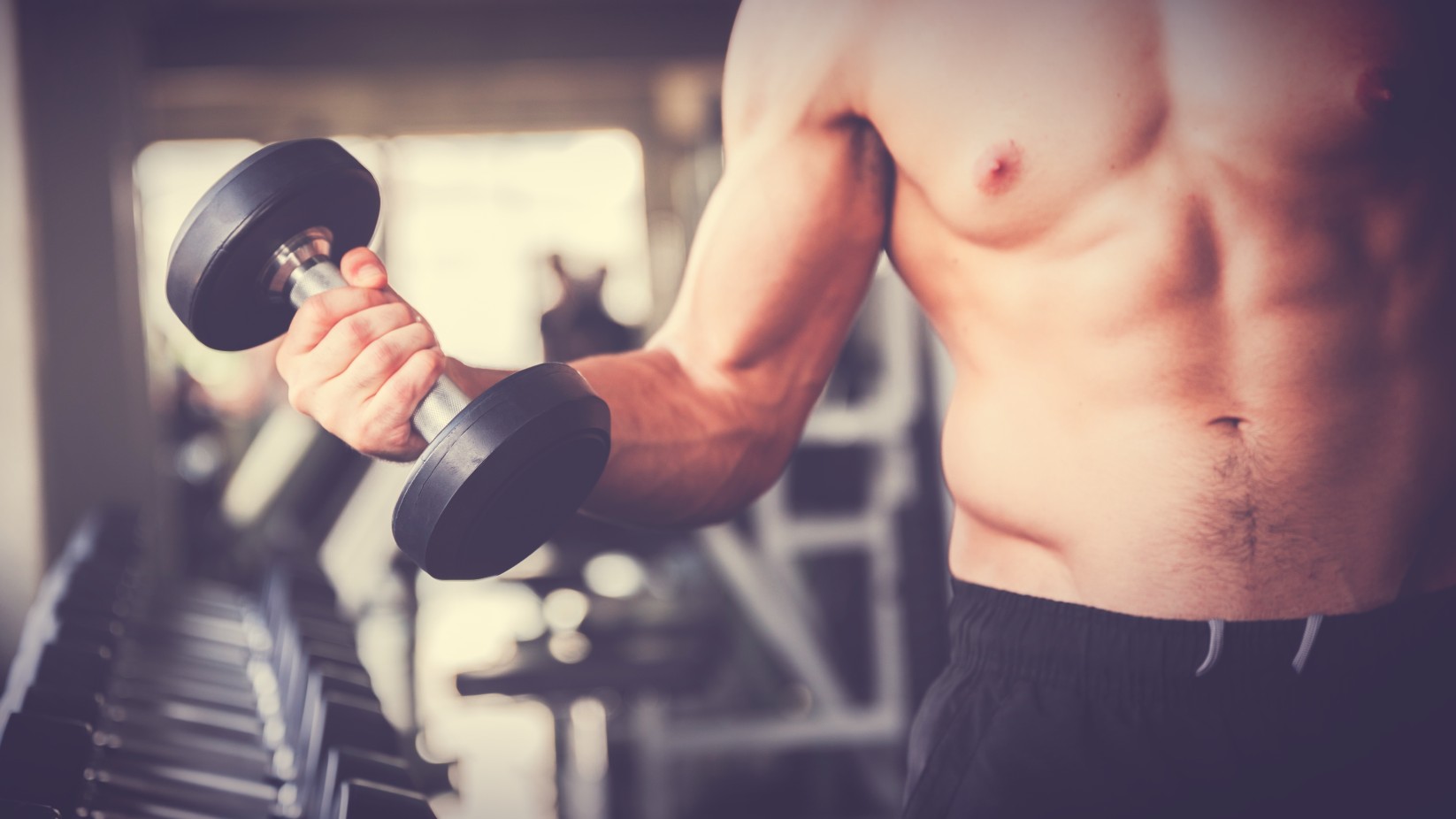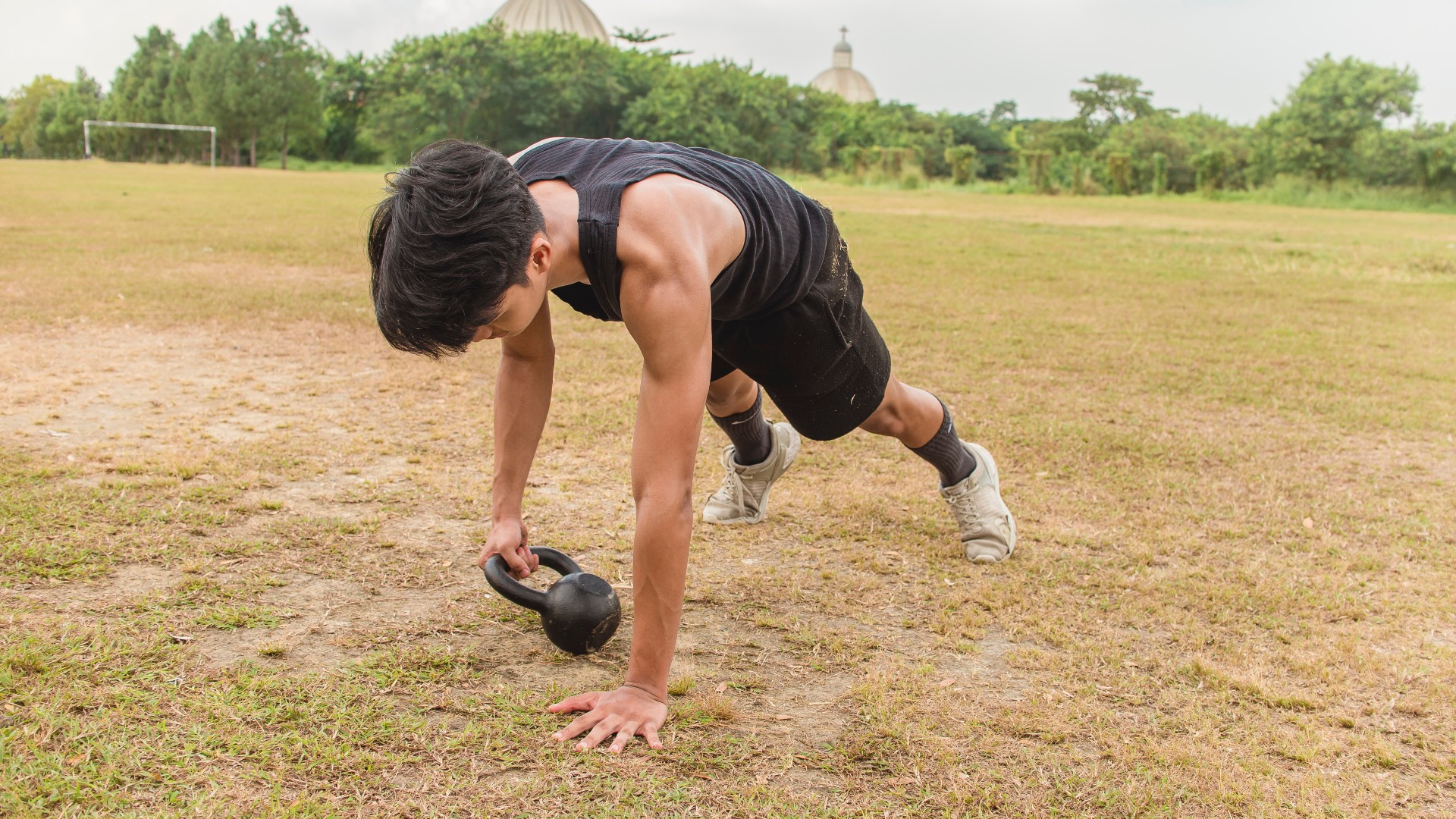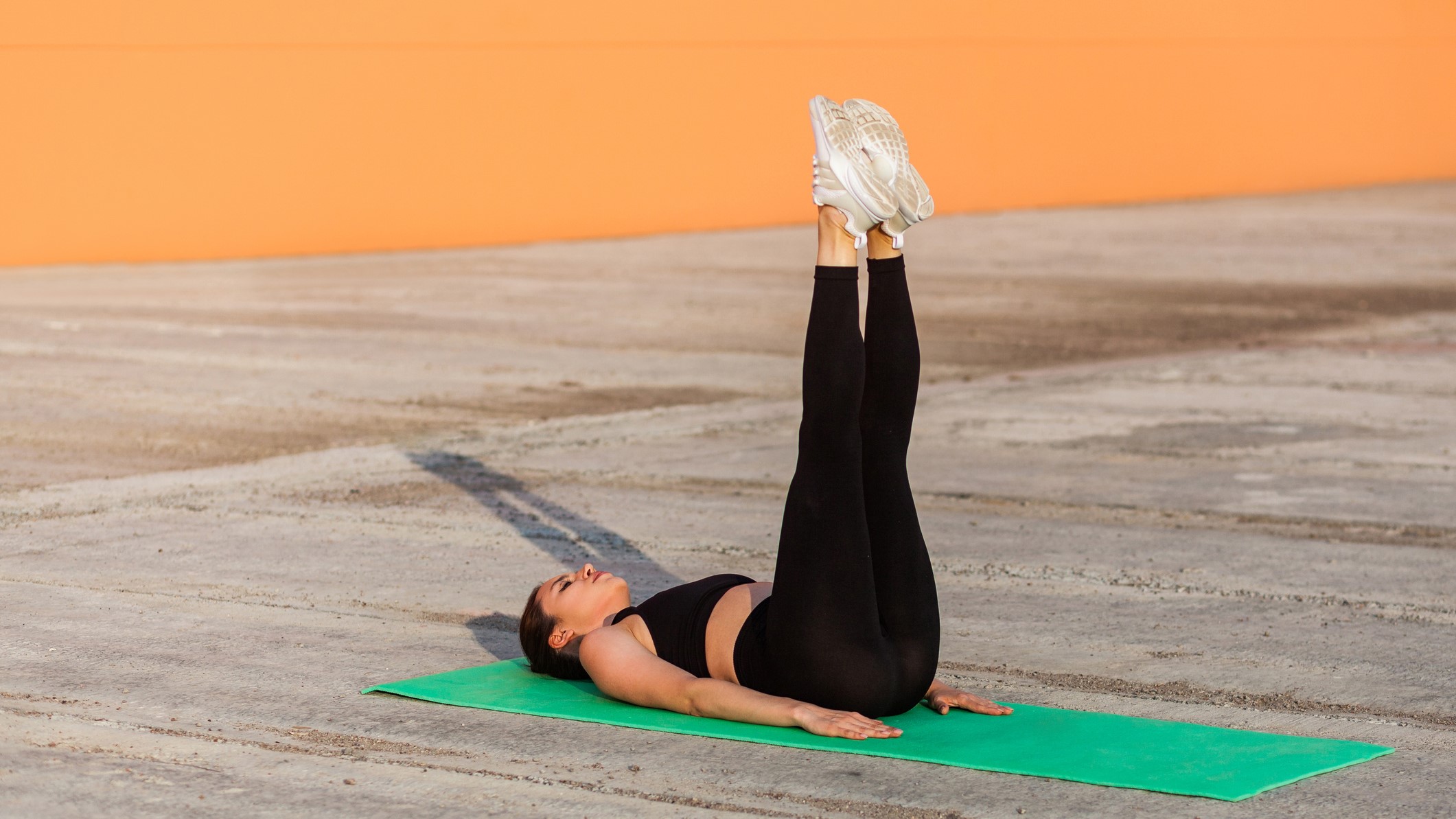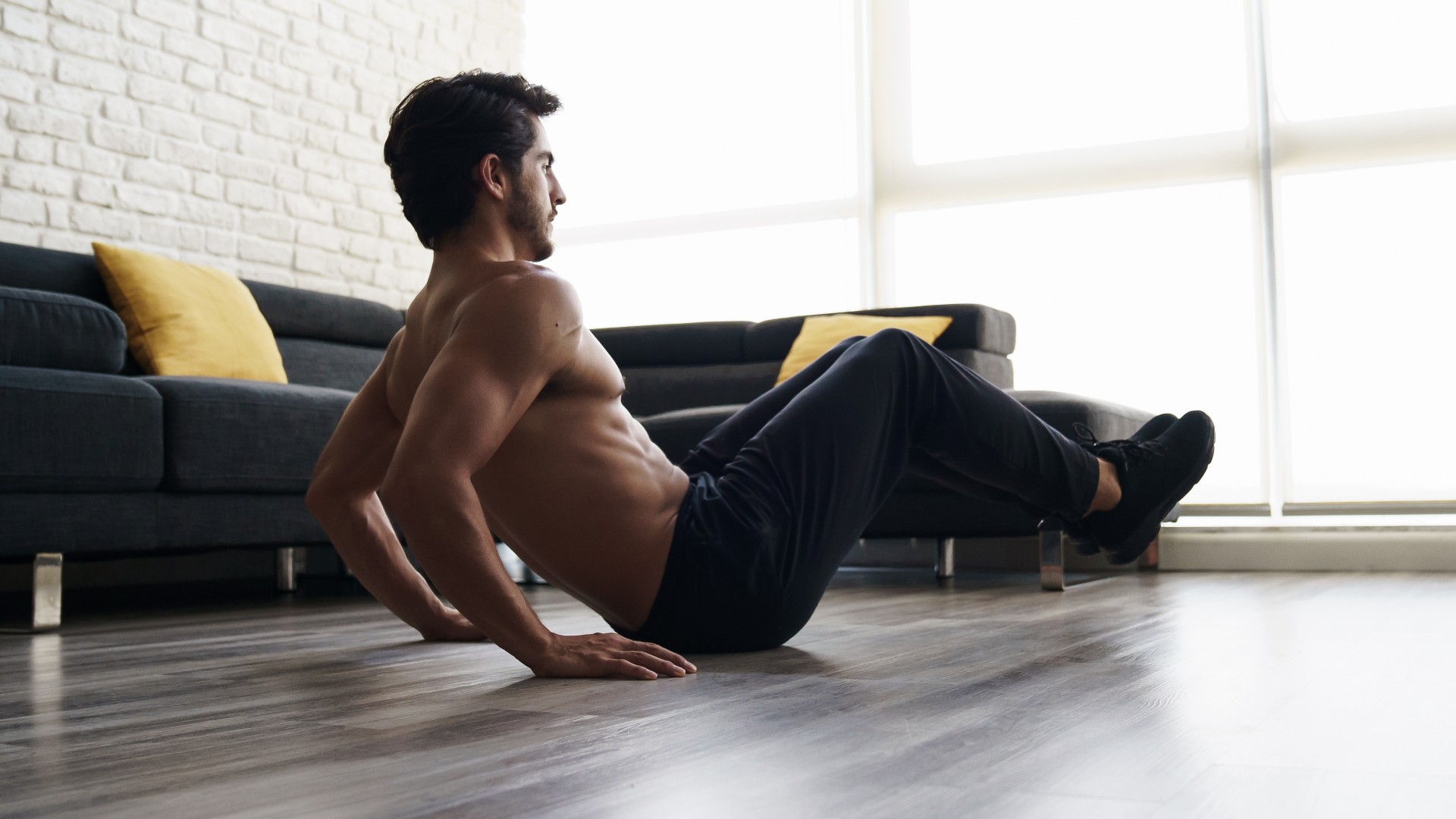
There’s nothing more satisfying than that deep burn in the abs after a core workout, and as a personal trainer, I can tell you that deep burn is a guarantee if you use these three ab exercises. Just grab one dumbbell and carve out 15 minutes to try this session...
Whether you prefer a hex dumbbell, a set of the best adjustable dumbbells, or alternative weights like a kettlebell, choose a weight you can lift using your core muscles rather than your lower back. That might mean removing the ego from the routine and focusing on perfecting your form instead (listen, we’re all guilty of it).
If you’re ready, roll out your mat and get ready to set your stomach alight in as little as 15 minutes. I sometimes like to keep my ab workouts as a short finisher to weightlifting sessions — if this sounds like you, tack this onto the end of your workouts or use it as a standalone session when you’re short on time.
What are the 3 dumbbell core exercises?
As a reminder, your core generates movement during pretty much every exercise, particularly compound exercises that recruit multiple joints and muscle groups like squats, push-ups and burpees. Whether you’re supporting your body in a static position like a plank or twisting your torso from left to right while boxing, your core is working hard to support you.
You’ll always hear us trainers hammering home to “engage your core!” or “squeeze those stomach muscles” because it helps protect your lower back as you move and generate more powerful movement. Runners, powerlifters, swimmers — everyone can benefit from building core strength. Naturally, you’ll strengthen these muscles while you exercise, but sometimes ab workouts are quick and effective ways to activate these muscles in a short time.
Try these three dumbbell core exercises and a beginner or advanced 15-minute core workout below.
Dumbbell plank drag

While holding the isometric (non-moving) plank position, you’ll target most muscle groups by default. Squeeze your glutes, abs and quads and focus on slightly rounding the upper back without dropping the bum or lifting too high into the air — align your hips with your shoulders.
Position your dumbbell (or whichever weight you choose) behind your left hand, pick it up by the handle using your right hand, then lift it to your right side and set it down. Repeat using your left hand and continue switching sides. Some prefer to grip the end of the dumbbell and drag the weight across, which is also an option while using heavier weights.
Use your core to keep your hips square without swinging your body from side to side.
Dumbbell leg raises

The leg raise targets your lower abs and hip flexors. If you suffer from sciatica or any generalized lower back pain, give this exercise a miss and check out some of the other best ab exercises to do instead. Start using a light dumbbell and only add weight if you can do so without using your lower back or compromising your form.
Lie on your back, grip a dumbbell between your ankles and position your arms by your sides for support. If you want to generate some extra fire, lift your upper back away from the mat, then squeeze your stomach and press your lower back into the mat beneath you. Raise your legs into the air, then lower with control as low as possible without lifting or straining your back. Pause, then drive your legs back up and repeat. Position your hands beneath your lower back for extra support.
Dumbbell knee tucks

Opt for a challenging weight, then set the dumbbell between your ankles and lay on your back. Bend your knees, lift your feet off the ground and press your lower back into the mat while engaging your stomach muscles. Position your hands behind your head. Draw your knees toward your chest and lift the hips away from the mat, then lower your knees again without letting your feet touch the floor.
The move works your lower abdominal muscles, the hip flexors, deeper core muscles like the transverse abdominis and (to some degree) your quads, glutes, hamstrings and lower back. It’ll also test balance and core stability, especially when using heavier weights. Squeeze your thighs together to keep the weight stable throughout.
To make the exercise harder, sit up (as pictured above) and place your hands next to your hips for support. Tuck your knees to your chest, then extend your legs away from you, keeping the dumbbell pressed between your ankles.
15-minute dumbbell core workout to try
Beginner:
50 on/10 off x 5 rounds
Perform your first exercise for 50 seconds, rest for 10 seconds, move on to your next one and finish the round with your third move. Your first round of three ab moves will take 3 minutes. Repeat for 5 rounds.
Advanced:
If you’re looking for a more challenging ab workout, give this a try.
2,4,6,8+ (pyramid reps): 15-minute time cap
Start with 2 reps per exercise, moving from one to the next without rest. Between exercises 2 and 3, keep the weight between your ankles. In the second round, complete 4 reps of each exercise, then 6, then 8. Complete as many rounds as you can in 15 minutes, adding 2 reps per round. Take brief rests after rounds if you need them.
Which exercise is best for abs?
I prefer programming compound exercises for abs as you’ll naturally target them while strengthening other muscle groups like your legs, shoulders, back, or chest. If you enjoy ab workouts, exercises that can be progressive (meaning you can make them harder as you get stronger) and be done consistently are best for building core strength.
Remember, your abs are just one muscle group that makes up the core, and to develop true core strength, you’ll need to target various muscle groups. Think of your core as a unit — like a corset that wraps around your torso and runs from ribcage to hips. Even your glutes and hip flexor muscles are part of the core musculature.
For example, your obliques run down the sides of your waist and can be targeted during rotational exercises and lateral flexion (think bending to the side). Your deeper core muscles are responsible for stabilization, so leg raises, plank variations and deadbugs are great options to consider.
Program ab exercises in all planes of motion — rotational (Russian twists), side-to-side (side bends), flexion and extension (like sit-ups and crunches), alongside lifting weights regularly and including functional weightlifting exercises like squats, pull-ups, presses and deadlifts that generate core power.







